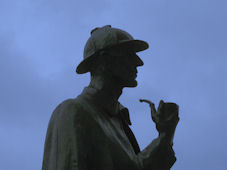 I usually attract two types of clients: those that want to identify major gift prospects and those that want research on identified prospects. No matter which service I provide, sometimes my clients get stalled on the next steps. You might have the donor prospect right there in front of you, but over time the path to a gift gets as lost as Hansel and Gretel’s bread crumbs in the forest of development activities.
I usually attract two types of clients: those that want to identify major gift prospects and those that want research on identified prospects. No matter which service I provide, sometimes my clients get stalled on the next steps. You might have the donor prospect right there in front of you, but over time the path to a gift gets as lost as Hansel and Gretel’s bread crumbs in the forest of development activities.
Prospect research consultants (including me) often talk about moves management or relationship management systems. These are powerful tools capable of catapulting your major giving to a new level. But there is another tool you can easily customize that gives you a laser-like focus on one donor prospect at a time. Just like the one you have in front of you right now.
Creating a Cultivation Strategy document is easier than you might think. This document should highlight key considerations such as capacity to make a gift, when you expect to ask for a gift (average is 18 months out), primary giving motivations and other vital pieces of information. But the true beauty of a Cultivation Strategy document is the action steps section.
Using everything you know about the donor prospect you have to sketch out the actions and completion dates that take you to the day you solicit the gift (just like a roadmap). If you have just identified a prospect these actions might be vague and the dates might just have the month. In the worksheet I created each action requires you to list the objectives. Those objectives are the lasers!
When you sketch out your actions for the first time you will immediately recognize just how short the time really is between your start date and your solicitation date. Yikes! Knowing the objective, the outcome you desire from each action, ensures you stay on track. No meandering. None of the “let’s just pick another prospect” because you dropped the ball on the first one.
At Aspire Research Group we want you to close more major gifts. Gifts reward your donors, the people you serve and you. Call or email us today to find out how we can help you close more major gifts.







